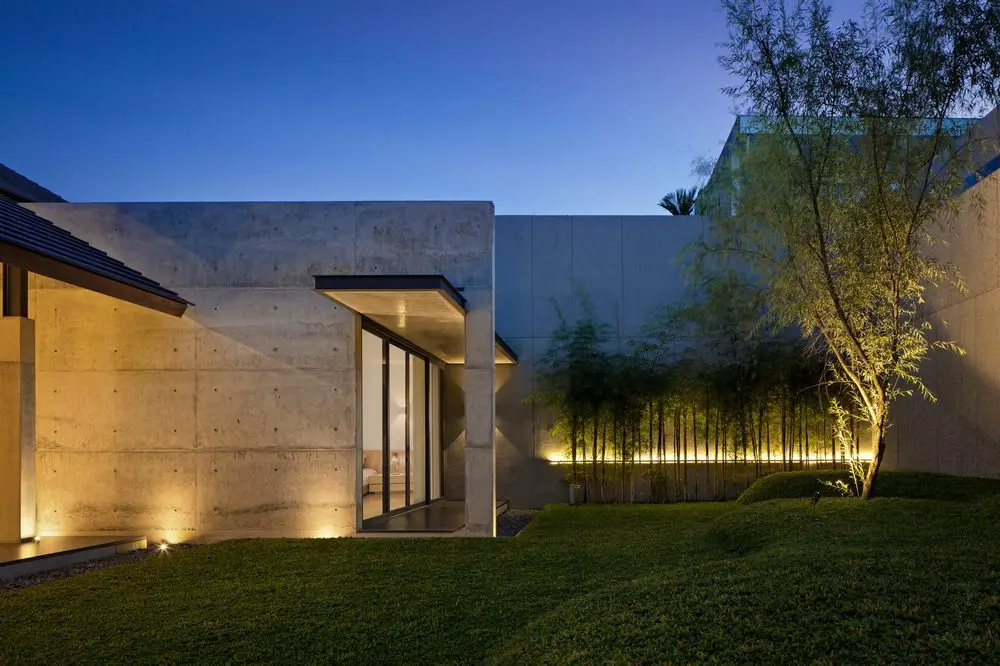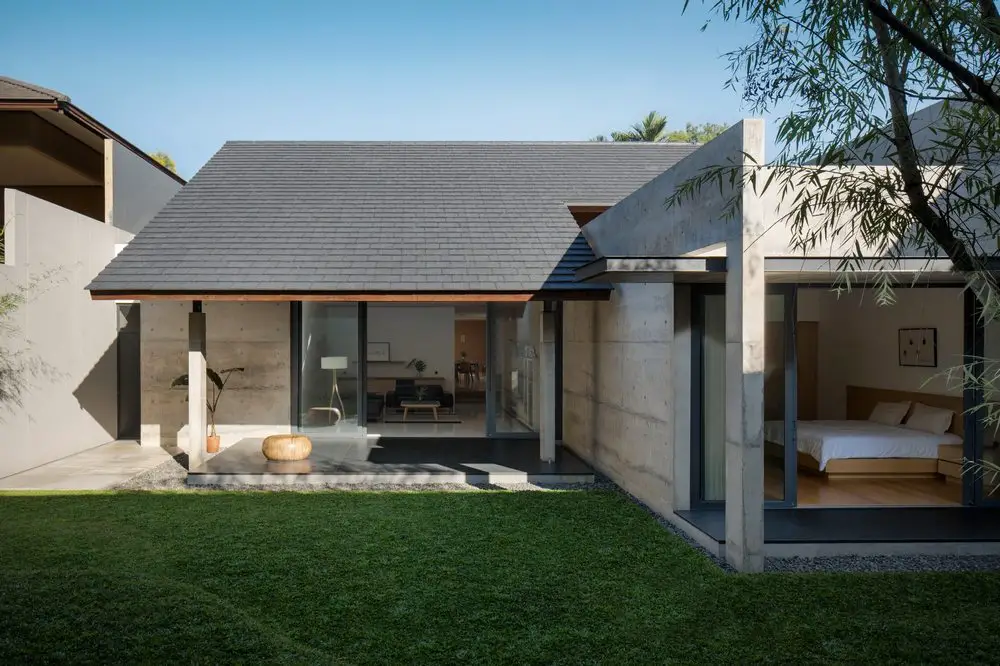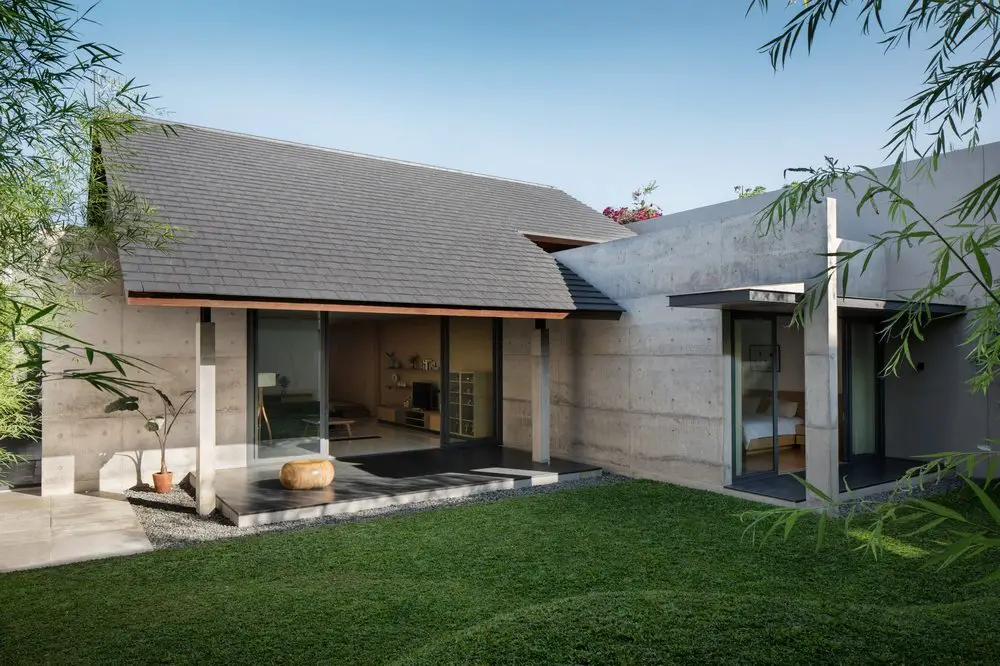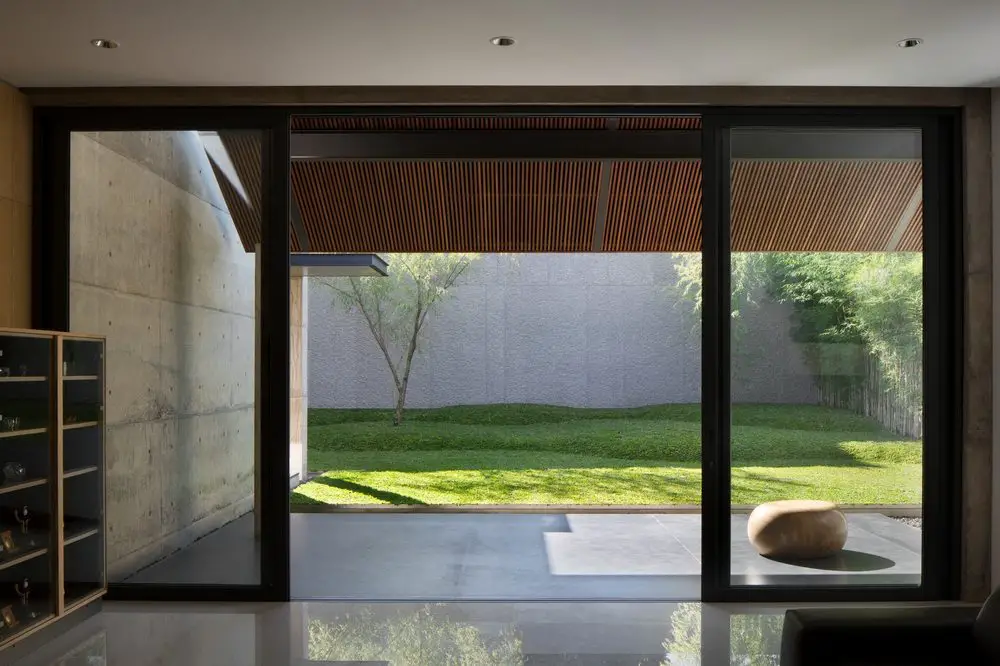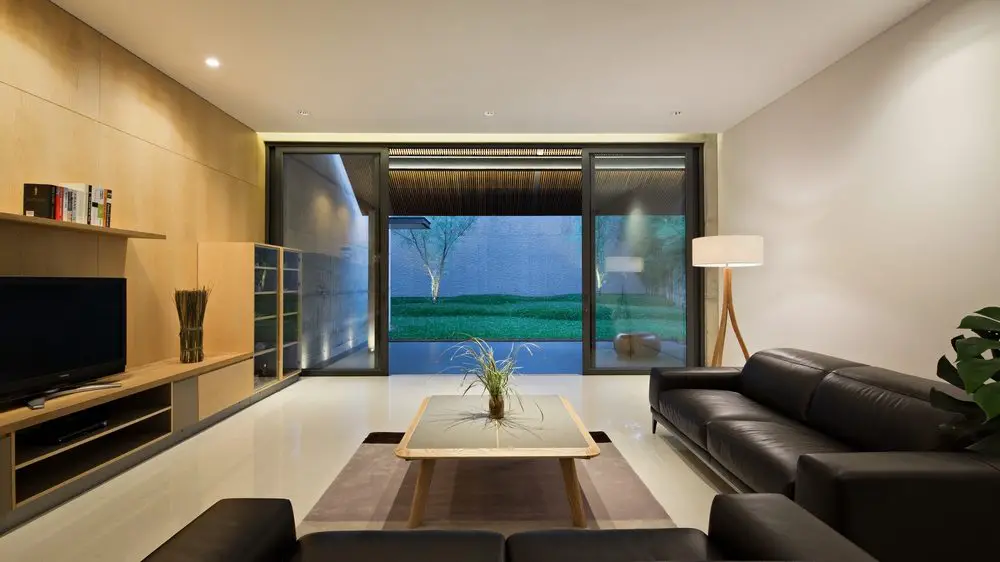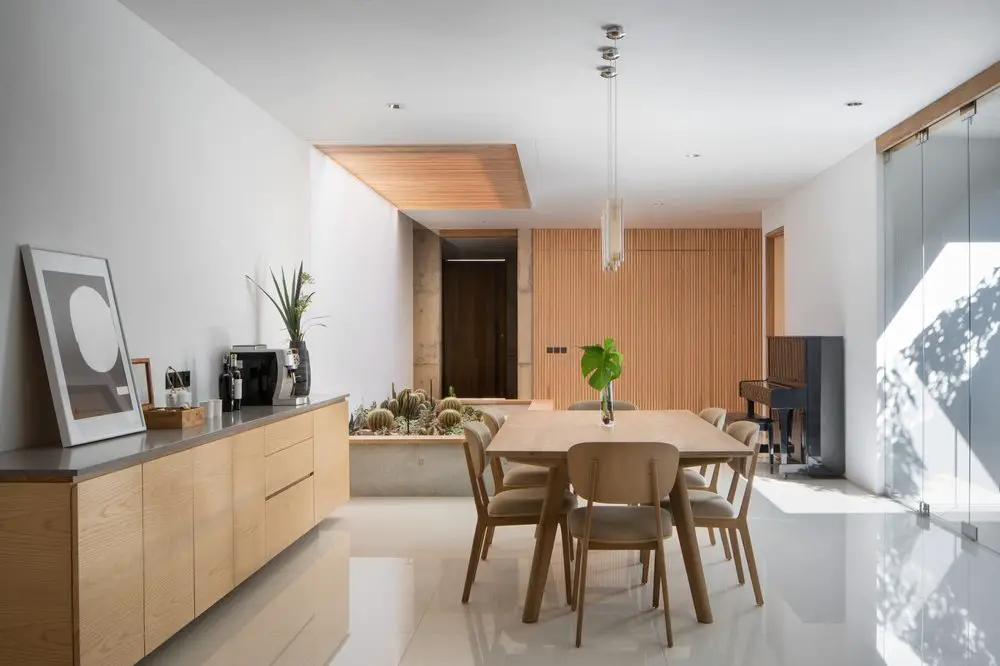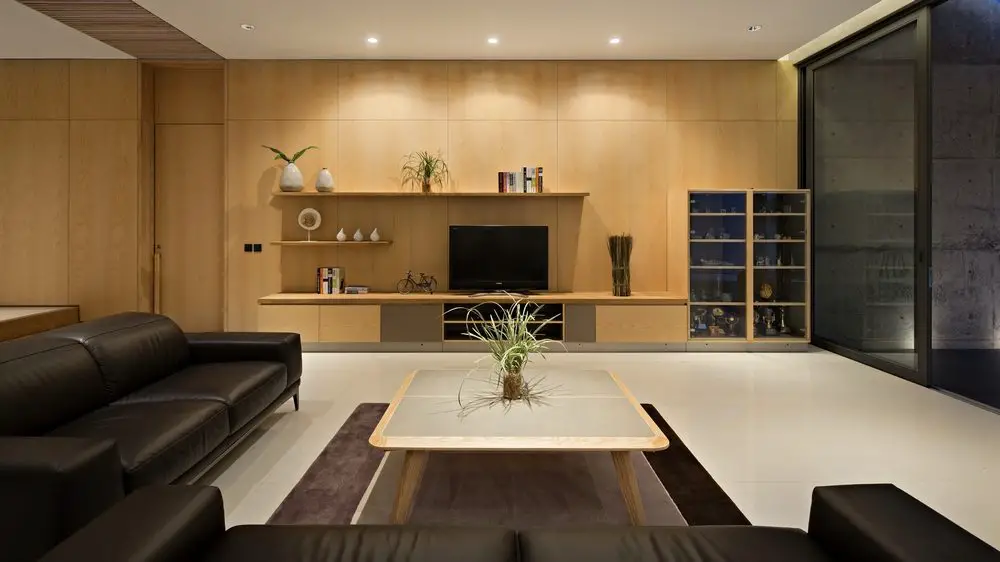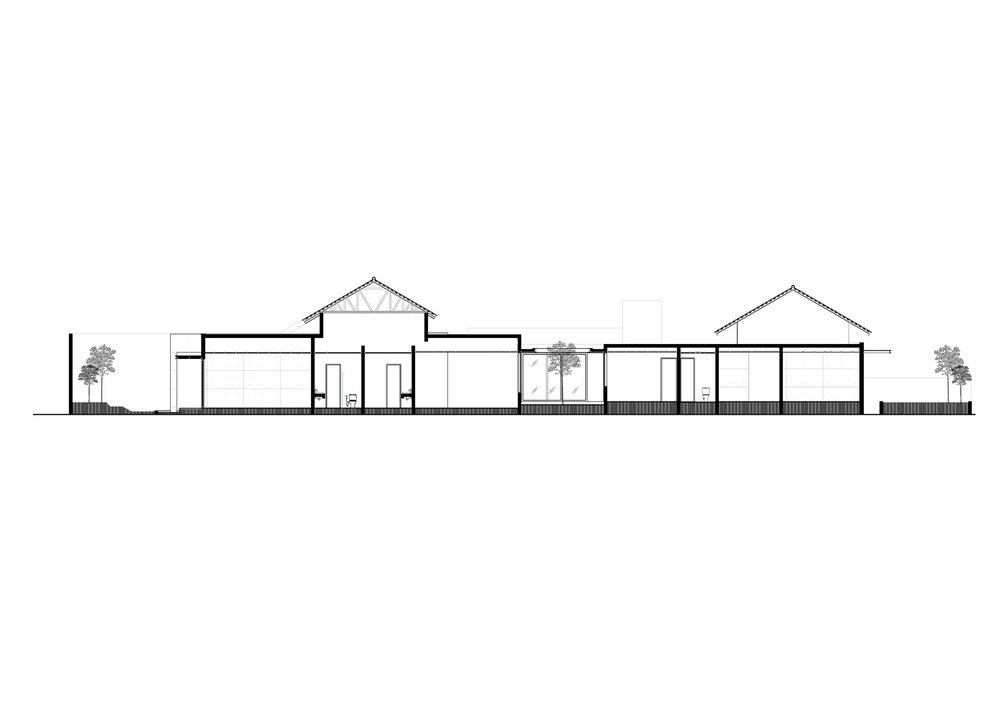Post Contents
Bandung, Indonesia – Pranala Associates
Project Year : 2017
Developed Area : 422 m2
Photographs : Mario Wibowo
The design of Hikari House attempts to put together masculine and feminine aesthetics. As we know, these two couldn’t be any more different than night and day. But oddly enough, they seemed to work harmoniously together.
This is a renovation project of an old house that dates back to the 80s. The client required a low-maintenance house that preserves the original layout. The result is a neat and clean home with a tropical theme.

The masculine aspect is seen on the façade with ulin wood, steel bars, and exposed concrete. As you go inside, you’ll see the feminine twists here and there. There’s the elevated green lawn with Japanese willow and bamboo trees, and the indoor cactus garden.

Hikari House translates to “House of Light.” True to its name, the architects found ways to bring natural light in. Because of this, the house is warm and bright without being overly perky.
Notes from the Architect:
Hikari House is a residential project located in Bandung, Indonesia. In a house where people lives and grow, layout plays a significant part in the design of a residential house, which speaks about the connection and synergy between public, private and service areas.
Hikari House, which literally means “House of Light”, is designed to give users the experience of how natural lighting and time interact with architecture. The natural light that sips into the house will vary, not only by day, yet the light will constantly change following the movement of the sun towards the earth that changes throughout the year. In addition to natural lighting, air flow plays a role in this house. The flow is designed the way the house ‘breathes’ from the terrace and living area towards the dining and dry garden.
Using the terrace house concept which creates a twist of the exterior and interior, made a different ambiance that blurs the boundaries of indoor and outdoor of Hikari House. Emphasizing the connection between outdoor and indoor, the pile that presents at the backyard is made at the same height with the eye level of the user that sits in the living room. This creates a stronger bond between outdoor and indoor elements. Then, the cactus garden that is seen from the dining room, creates a joinery of the outdoor to the indoor seamlessly. Furthermore, with the additional void space that exists besides the dining room, it makes the indoor space more spacious when the partition glass is opened.
As the interior design is a unity and is inseparable with the architecture itself, the interior of this house is stitched by the elements that can be seen throughout the building. Architectural approach, natural lighting, artificial lighting, furniture, decorative accents, up to the landscape that pleases, those are the elements that communicate and felt from the inside of the house.
The façade of this house is facing towards the west, with a solid look that gives the user privacy and prevents the interior from the afternoon sunlight glare. The form and material of the house represent the idea of creating a house with low maintenance. Furthermore, the explicit usage of material such as exposed concrete, ulin wood, and steel bars used for the exterior, this house creates an impression of a modern tropical house.
Click on any image to start lightbox display. Use your Esc key to close the lightbox. You can also view the images as a slideshow if you prefer. 😎
Exterior View :
Interior View :
Drawing View :
Inside Outside House is another stunning home from the same country…

